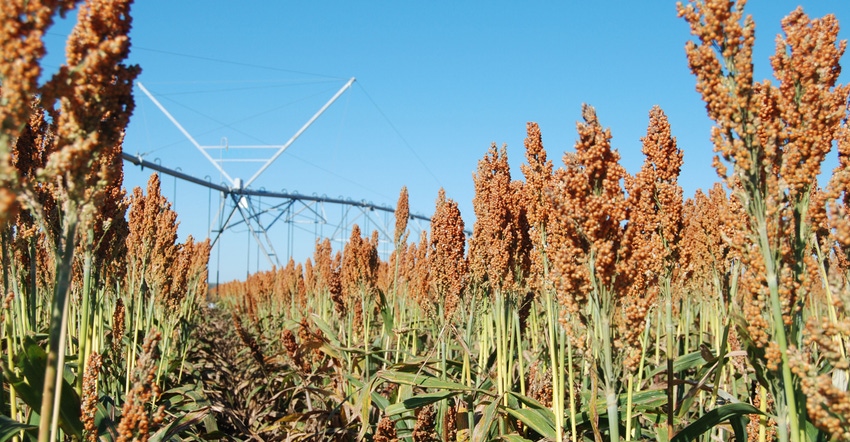June 23, 2021

I kicked off last month’s column by saying that I never cease to be amazed at how quickly fortunes can change. I was of course talking about market opportunity relative to previous years rather than soil moisture, as most of the sorghum belt was woefully short on the latter. However, my statement about fortunes changing quickly is as true today as it was a month ago. The drought seems to be easing for the moment, and although it’s anybody’s guess as to how long this trend will last, the outlook is much brighter than it was just 30 days ago.
Not all areas are flush, and there are certainly dry spots where soil profiles are nowhere close to field capacity, and are thus susceptible to drought conditions later in the summer. Given this situation and the fact that irrigated sorghum acres are up in 2021, I thought it would be a good time for a refresher on optimizing irrigation water usage in sorghum. As is usually the case when I write about agronomic issues, sorghum checkoff agronomist Brent Bean provided the intellectual firepower for the endeavor. Thanks for your guidance, Brent!
Irrigation plan
Sorghum is increasingly irrigated as a stand-alone crop in many parts of the sorghum belt, given the irrigation water declines we continue to experience over the Ogallala Aquifer. It produces its first bushel of grain 4 acre-inches sooner than corn, and it has a greater ability to withstand heat and wait for moisture. However, it’s most often used in situations where available irrigation water isn’t adequate for a fully irrigated corn crop, for example. In these instances, sorghum really shines, as it can withstand short periods of stress with little yield loss while its companion crop is being irrigated to its full potential.
For farmers in either situation, remembering a few key points will allow for optimal water use and yields. First, soil moisture available should remain above 50% in the top 3 feet of the profile, but if availability falls to 30% to 40% for a short period of time, yields will likely be unaffected — or only slightly reduced. Second, it’s important to keep in mind that application timing is critical (particularly for those splitting water between sorghum and another crop). Head formation begins 30 to 40 days after emergence, so ample soil moisture is important for large heads with increased berry numbers.
Boot stage
After this milestone, the next key developmental stage is the boot stage, just before head emergence. Much of the research that’s been done in sorghum over the years has clearly shown the importance of this stage, and that ample soil moisture significantly improves yield. Finally, as with corn, a full profile at grain fill will pack starch into the berries, increasing both test weight and final yields. A good rule of thumb is to irrigate while the grain is beginning to color. After this, any additional irrigation won’t increase yield, but it could increase stalk strength and improve harvest efficiency in dry environments.
Whether irrigated on its own or paired with another crop, sorghum is an increasingly smart choice on irrigated acres. For farmers readying their wells for the summer, keeping the above points in mind will maximize your chances for success. And as always, please don’t hesitate to reach out to me or Brent Bean if you have questions. Bean can be reached at [email protected].
Duff is executive vice president of National Sorghum Producers. He can be reached by email at [email protected] or on Twitter @sorghumduff.
About the Author(s)
You May Also Like






